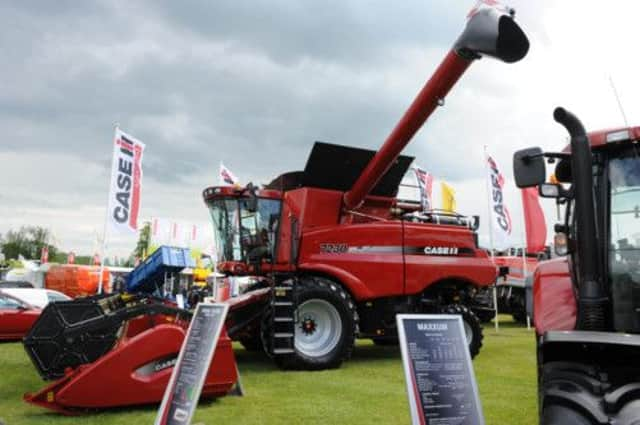Comment: Agriculture’s constant must recognise need for change


The site was filled with plants and shrubs, greenhouses, horticultural trade stands and a healthy throng of people interested in all matters relating to the garden.
I was particularly glad I went to Gardening Scotland, but the Ingliston familiar to me is one packed with cattle, sheep and horses, farmers and stockmen, new farm machinery, agricultural trade stands and a host of camp followers linked to farms and livestock breeding. That familiarity goes back to 1980 when, as a reporter on a weekly farming paper, I attended my first Royal Highland Show.
Advertisement
Hide AdAdvertisement
Hide AdThe Royal Highland, which opens its gates for the annual four-day event on 20 June, has over the years become Scotland’s premier agricultural event. It attracts an average of 180,000 visitors, is marketed modestly as the “greatest show on Earth” and leads the field in showcasing Scottish farming, food and the countryside.
Over the years, it has adapted to change and adopted new ways of working. While it has retained the traditional elements of livestock showing and competition, it has focused on food and its production, cooking and provenance, traditional rural skills, new technology, and become the starting point for political initiatives and host to international visitors.
It has also matured its educational remit via the Royal Highland Education Trust, attracting around 25,000 schoolchildren every year to bring them face-to-face with modern agriculture.
The Royal Highland is run by the Royal Highland & Agricultural Society of Scotland (RHASS), established in 1784 to promote the regeneration of rural Scotland and positioned as a symbol of enlightenment.
From its inception, the society has been in the vanguard of agricultural change and improvement. It was shaped by forward-thinking individuals who recognised that agriculture was an indigenous industry which had to be furthered, promoted and developed on scientific lines.
Its thinkers and leaders came from the same stable as those redoubtable improvers who penned the great agricultural accounts of the late 18th and 19th century – men who envisaged a crusading role for the society which they hoped their successors would pursue with vigour.
The RHASS has created a model event in the Royal Highland. That it has endured and acquired iconic status is testimony to its innate strengths, not least its ability to broaden its appeal and offer attractions that bring in paying visitors.
It has become a modern show. There are other examples around Scotland on a smaller scale that populate the farming calendar from May to September. They represent a long tradition in Scottish agriculture, but they face real challenges.
Advertisement
Hide AdAdvertisement
Hide AdAgricultural shows at one time were a must for breeders. But the cost of showing, the decline in the farm labour force, and the reduction in livestock numbers have created a world very different from that of John R Allan, who wrote compellingly about cattle shows as unshakeable fixtures in the rural firmament.
Shows have had to change to survive. They are increasingly facing demanding health and safety regulations, and challenged by the increasing relevance of specialist farming events.
And for the public to come through the gates on a Saturday afternoon there has to be a level of entertainment that reflects more than livestock judging. Some show organisers have reacted imaginatively to this and proved consistently that they can bring in large crowds. Others have struggled to find a winning recipe.
The scale of the Royal Highland on a 300-acre site cannot be replicated in every county of Scotland, but the formula could if some of the smaller events looked at pooling resources to mount larger regional events.
This would not only bring in the best of livestock from a wider area, but create a broader platform for the promotion of Scottish food and a showcase for agriculture as a primary food producer, the home to top-quality livestock and a vital player in the Scottish rural economy. They could also be key to getting the farming and countryside message across to the public and bridging the gap between town and country.
More than before, agricultural shows have to be innovative, adaptive and up to speed in charting their course. And they have to address and attract the non-farming community to survive.
As John Hutt, chief executive of the RHASS, has observed about his own event, there is a need to get smarter at promoting the show and to demonstrate the organisation contributes to the fabric of the country.